This page contains affiliate links. Please read our disclosure for more info.
It’s been four years since our last post on digital nomad resources so it’s time for an update on the technology and equipment that makes our nomadic life possible.
Equipment
1) Laptop: Macbook Pro 16 inch (Simon) and Macbook Air 13 inch (Erin) – I think the Macbook Air is the perfect travel laptop—light, powerful, and sturdy. Simon likes the Mac Pro for more power and a bigger, retina screen, so this is a good option if you are doing a lot of design or video work.
2) Hard Drive: Western Digital My Passport 1 TB (Simon) and Seagate Backup Plus Slim 1 TB (Erin) – Backing up is essential and it’s easy to do with Time Machine (for Mac). These hard drives are small and sturdy. We carry each other’s hard drive so all the data isn’t in one place.
3) Camera: Olympus OM-D EM-5 mirrorless camera – I switched from a Canon DSLR to a mirrorless camera two years ago and reduced my gear weight by 33%. I haven’t missed the SLR at all; in fact the EM-5 is a much better camera, especially in low light. I think mirrorless cameras are the perfect compromise for travellers between quality and weight. I use the Olympus 14-42mm kit lens and the tiny Panasonic 20mm f1.7 pancake lens which is great in low light and for food photography. Unless you are really serious about photography you might want to skip a camera and use your smartphone (we use our phone for many photos).
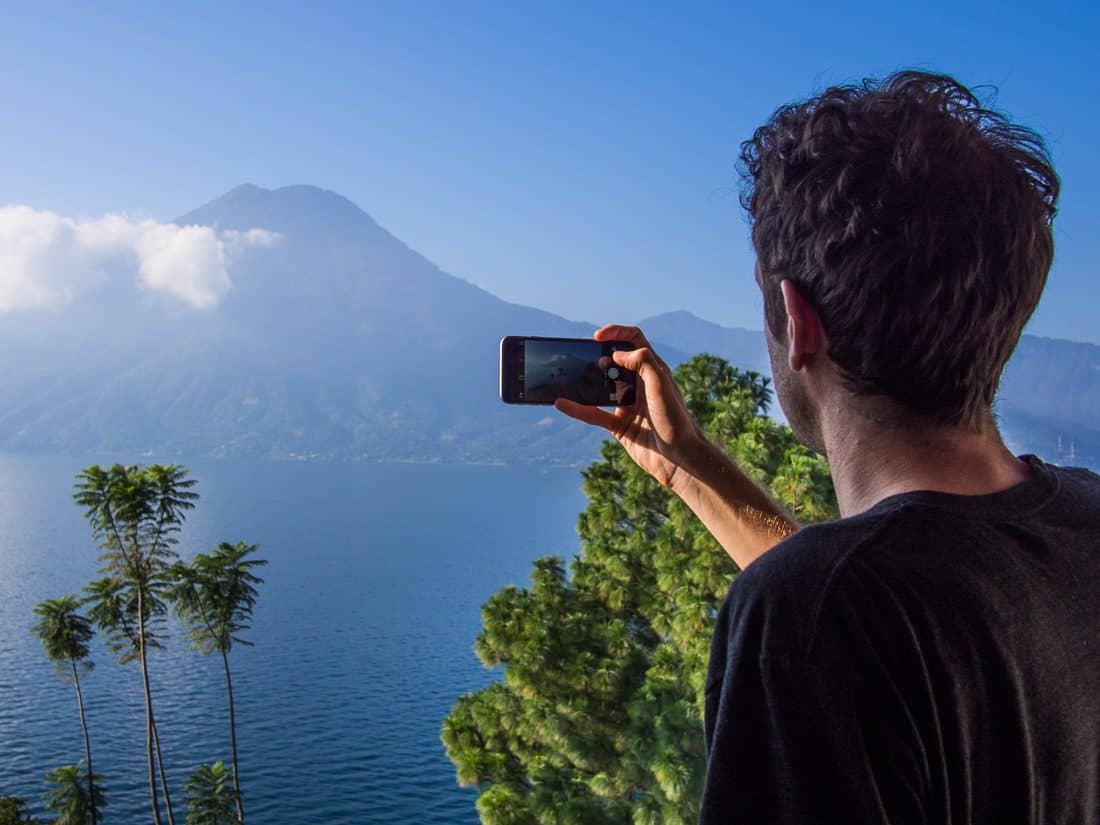
4) Phone: iPhone 6 (Simon) and iPhone 5 (Erin) – We managed for years without a phone but it is incredibly useful to have. We don’t use it to make calls often but being able to look up directions, find restaurants and translate menus while we’re out makes life much easier. We also use it as an internet hotspot to connect our laptops to when we’re somewhere with unreliable internet (3G is often faster than WiFi). Our phones are unlocked and we buy local SIM cards and data plans.
5) Kindle Paperwhite – Simon reads on his phone or iPad but if you are a big reader like me, or like to read in the sun, then the Kindle is the best option for its paper-like screen and long battery life. I have the 3G version so I can buy books on the beach or on a train. It saves so much weight compared to paper books and I can buy a wide range of books easily.
6) Carry-On Backpack: Outbreaker Travel Backpack (Simon) and Osprey Farpoint 40 (Erin) – We’ve been travelling with just a carry-on sized backpack each for the last five years. It’s easier to carry around, saves money on flights and time at airports, is more secure (we keep it with us on planes and buses), and enables us to carry our laptops in our main bag rather than needing a second one. We did a lot of research when we replaced our backpacks last year and decided the Tortuga and Osprey Farpoint 40 are the best options for digital nomads—read our full review.
For more about what we pack see our packing list, our tips for travelling carry-on only, and my book, The Carry-On Traveller: The Ultimate Guide to Packing Light.
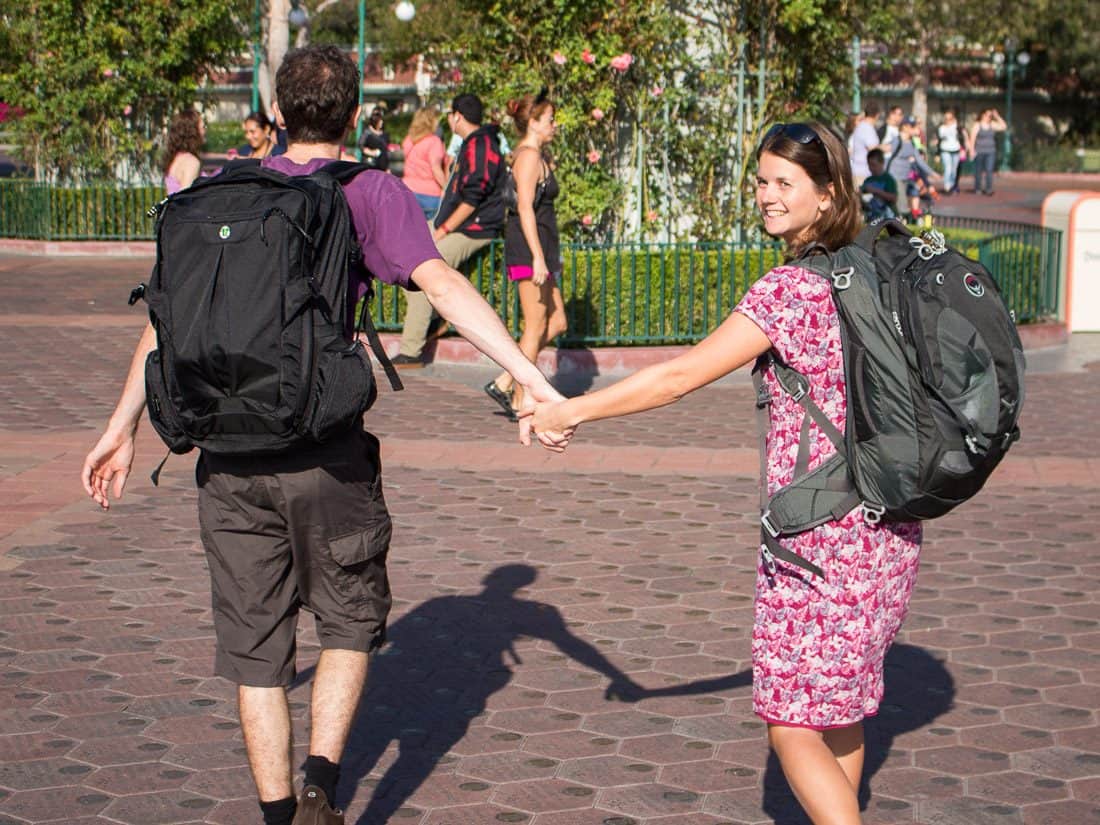
Software
7) Backblaze – Backing up on hard drives isn’t enough as if both our bags were stolen we’d lose everything; an additional cloud backup is vital. We recently switched to Backblaze which we love. For just $5 a month per computer we can back up unlimited data and it’s really easy to use, automatically backing up everything on our laptops (and from attached external drives). The initial backup does take weeks (depending on your internet speed) but now new documents and changes are backed up quickly.
8) Dropbox – Dropbox is another cloud backup but it’s not the best solution for backing up all your data. We have a free account which we use for sharing files (as we can both access our Dropbox folder) and backing up our iPhone photos using their camera upload feature. A free account gives you 2 GB of data and if you sign up with this link you’ll get an extra 500 MB free.
9) Witopia – This VPN allows us to change our computer’s location so we can use Netflix to stream TV whatever country we’re in. It’s also good for security, especially on unsecured networks, and for accessing banned websites in countries like Vietnam and China. Sign up here for a 15% discount. $49.99 a year.
10) 1Password – A password safe is the best way to manage the hundreds of passwords for all our online profiles. To access it you only need to remember one password (which you shouldn’t use anywhere else). You can choose your own passwords or it will generate strong, unique passwords for you. It syncs the data to both of our laptops and our phone, where we can access all our passwords easily using fingerprint ID. We couldn’t live without it! $29.99 for Mac and Windows.
11) Skype – Still our favourite way to talk to family for free, and make inexpensive calls to landlines abroad. Free for Mac & Windows.
12) Adobe Creative Cloud – We have a monthly membership which gives us access to Adobe’s latest software. I use Lightroom for organising and editing my photos, and Simon uses Photoshop and Illustrator for design, and on occasion, Audition, After Effects and Premiere for audio and video. $50/ £45 a month for Mac & Windows.

13) Scrivener – The absolute best tool for big writing projects like a book (it’s what I’m using for writing my book about how to travel carry-on only) as it allows you to store notes, outlines, research, and the actual draft in one place and organise it easily. It’s not just for projects either—Simon uses it for storing reference material and writing blog posts. It has a ton of features so it’s worth doing the tutorial before you start using it. 30 day free trial and then $45 (for Mac and Windows).
14) nvALT – A simple text editor that I use to write blog posts. It supports Markdown which allows me to indicate styles like headings with a simple text code and then export as HTML, ready to be pasted into WordPress. It autosaves continuously, and as all files are stored together it’s easy to search through them. Free for Mac.
15) Pages & Numbers – I switched from Open Office to using the Mac’s word processing and spreadsheet software and it’s so much better. I use Pages for creating invoices and for documents where I want more formatting than nvALT offers and Numbers for spreadsheets for keeping track of business income and expenses to make tax returns easy. Free for Mac.
16) Google Calendar (Erin) and Calendar for Mac (Simon) – We disagree over the best calendar to use. I prefer Google Calendar as it allows me to choose a colour for each entry so I can see at a glance different categories of tasks (to do, travel, advertising renewals, birthdays, deadlines). It syncs to Calendar on the Mac and to the iOS app. Free.
17) ImageOptim – An easy way to compress photos without losing quality—you just drag and drop them into the dock icon. Free for Mac.
18) Typinator – A text expander that saves us time. We’ve set up abbreviations for things we type often (email addresses, website urls, standard email responses) and Typinator completes the rest of the text for us. €24.99 for Mac.
19) MAMP – This allows Simon to work on websites offline. It installs a local server on your laptop where you can work on your WordPress sites as if it were online. Perfect for testing new designs, updates, and plugins before setting them live. Free for Mac and Windows.
20) Xcode – The software Simon uses for making iOS apps. Free for Mac.
21) SourceTree – For source control when developing websites and apps. Free for Mac and Windows.
22) Sublime Text 3 – A text editor for writing code. Free indefinite trial for Mac and Windows then $70.
23) Pupil – For managing resolutions on the Retina Macbook Pro. Allows you to choose between the full retina experience or more space on your desktop. $5 for Mac.
24) HandBrake – For transcoding videos to formats that we can watch on the iPad. Free for Mac and Windows.
Apps
We’ve written a list of the 21 best apps for digital nomads. Here are the ones we use the most and some new favourites since we wrote the list. Many of the websites listed in the next section also have apps.
25) Google Maps – We use it for directions every day. We sometimes use Apple’s Maps app but in more remote destinations Google Maps is usually more accurate. Free for iOS and Android.
26) Trail Wallet – An easy travel expense tracker. Simon created Trail Wallet to help us and other travellers stay on budget and we still use it every day. Update: After 10 years, Trail Wallet is sadly no longer for sale.
27) Speedtest – Useful for checking WiFi speeds before committing to accommodation (or a coffee shop). Free for iOS and Android.
28) Duet Display – Turns your iPad into a second monitor via USB. Simon loves the extra space. $15.99 for the iOS app, works with Mac and Windows.
29) Google Translate – We had an entire conversation with an Indonesian taxi driver using Google Translate. It’s not always accurate but you can usually get the message across and it’s free and supports 90 languages. The camera feature is amazing—hold the camera over a sign or menu and it translates it instantly. Free for iOS and Android.
30) Overcast – Simon’s favourite podcast app. Free for iOS.
31) Uber – The easiest way to call a taxi. We got addicted to Uber in the US as you can request a taxi with one tap, it arrives in minutes, costs less than a normal taxi, and is charged to your credit card. Uber is now all over the world. Free for iOS and Android.
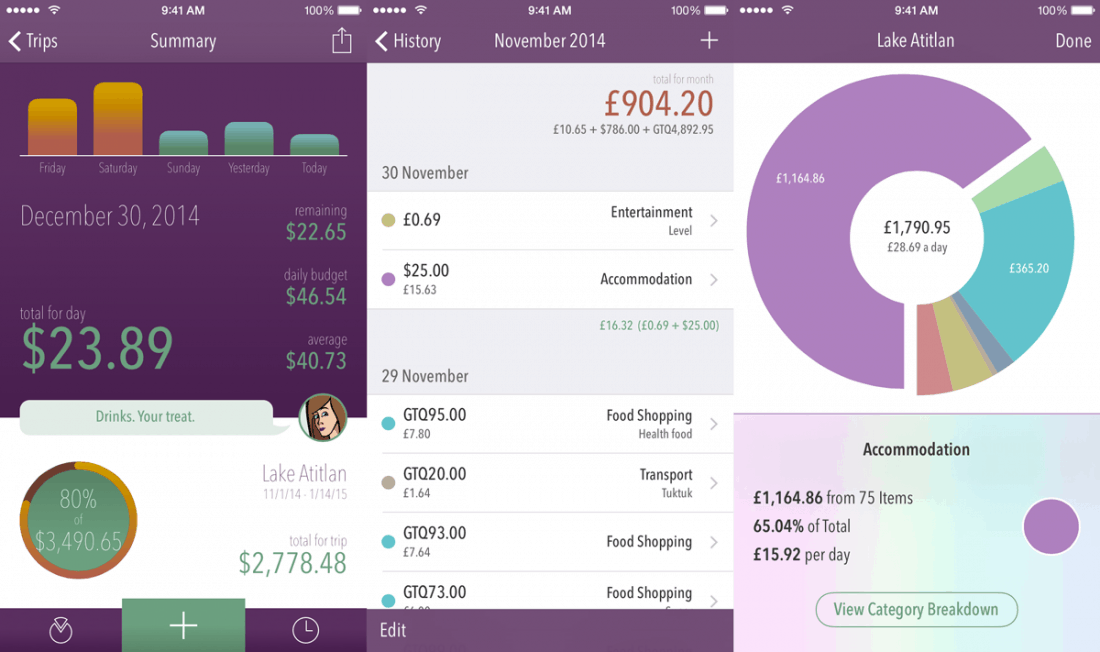
Websites
32) WordPress – We run our blog on WordPress. It’s free (although you may need to pay for a theme or custom design) and is easy to update yourself without any technical skills.
33) Linode Hosting– To host our websites we use Linode, a VPS that offers amazing value for money but you need to be comfortable with the Unix command line. If you don’t have much traffic, shared hosting is a cheaper option.
34) Buffer – For scheduling tweets.
35) Paypal – It’s how we get paid by most advertisers.
36) MailChimp – We use this for managing our subscriber lists and sending out newsletters.
37) Netflix – For streaming TV shows and films. If you are in a country that doesn’t have Netflix then you’ll need a VPN to connect to a country that does. This has the extra benefit of being able to try out different countries as the content differs (for example, Australia has the Harry Potter films and the UK and US doesn’t).
38) Internet Banking – We use internet banking to transfer money between our savings and current account, pay bills, and keep track of our spending. In the UK many banks require you to use a card reader for some transactions so take it with you. Read more about managing your finances on the road.
39) TripAdvisor – I use this all the time for hotel, restaurant, and activity reviews.
40) Happy Cow – For finding vegetarian restaurants around the world. The app is useful as you can see what’s nearby.
41) WikiTravel – The quality of content varies but it’s a useful basic travel guide.
42) Too Many Adapters – Everything you need to know about travel technology. Their posts about buying SIM cards in various countries are particularly useful.
43) Nomad List – This site ranks the best digital nomad cities around the world by criteria such as WiFi speed, cost of living, and weather. I don’t always agree with their data but it’s a handy reference. Their forum is even more useful.
44) Gazelle (Update: no longer available) – An easy way to sell your Mac laptop or phone. Get a quote on the website and then take it to a FedEx who pack and ship it for free. It’s only in the US but that’s where we try to upgrade our gear as it has the lowest prices.
45) Github – For storing and sharing remote source code repositories.
Accommodation
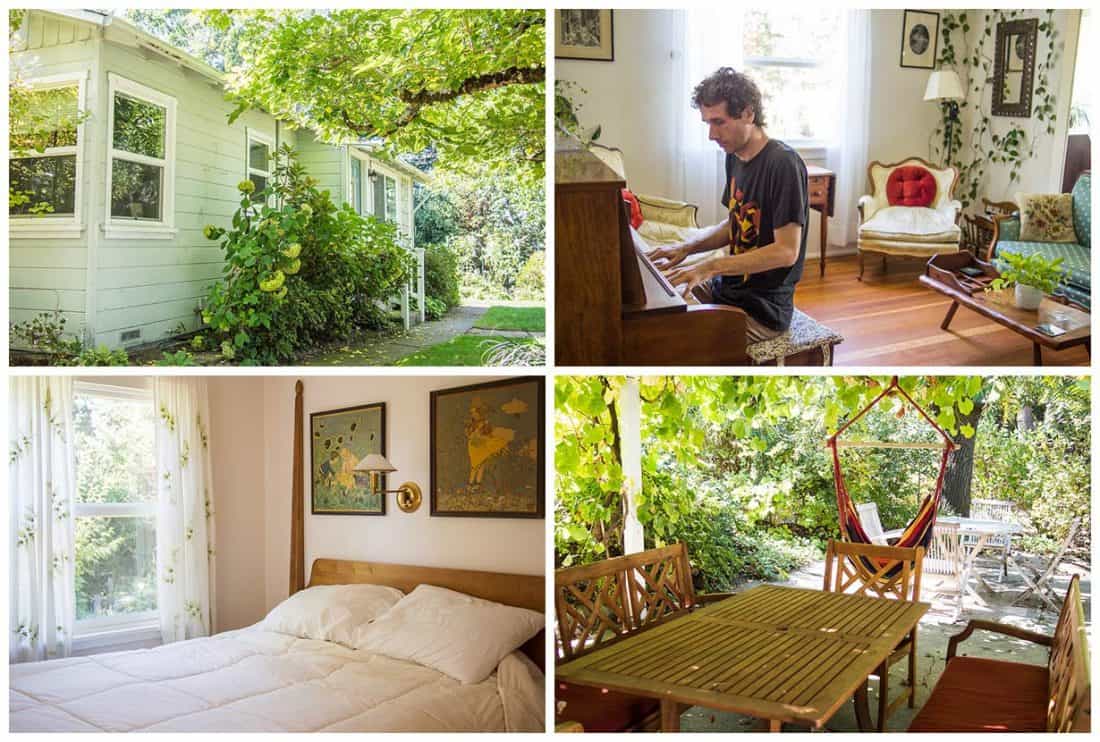
46) Airbnb – Airbnb is amazing for digital nomads as you can rent an apartment for less than the cost of a hotel room. We use it for almost all our accommodation in North America and Europe—the monthly deals can be especially good. It can be more expensive than hotels in developing countries but still a good option if you want the space and kitchen of an apartment.
47) Booking.com – If we’re staying somewhere for one or two nights we’ll book a hotel instead of Airbnb. Booking.com is my favourite hotel booking site as it’s easy to use and there are no booking charges or extra hidden fees.
48) Trusted Housesitters – Housesitting is a great way to save money on accommodation, get off the beaten track, and enjoy home comforts and pets for a while. Trusted Housesitters lists housesits around the world with lots of choice in Europe and North America.
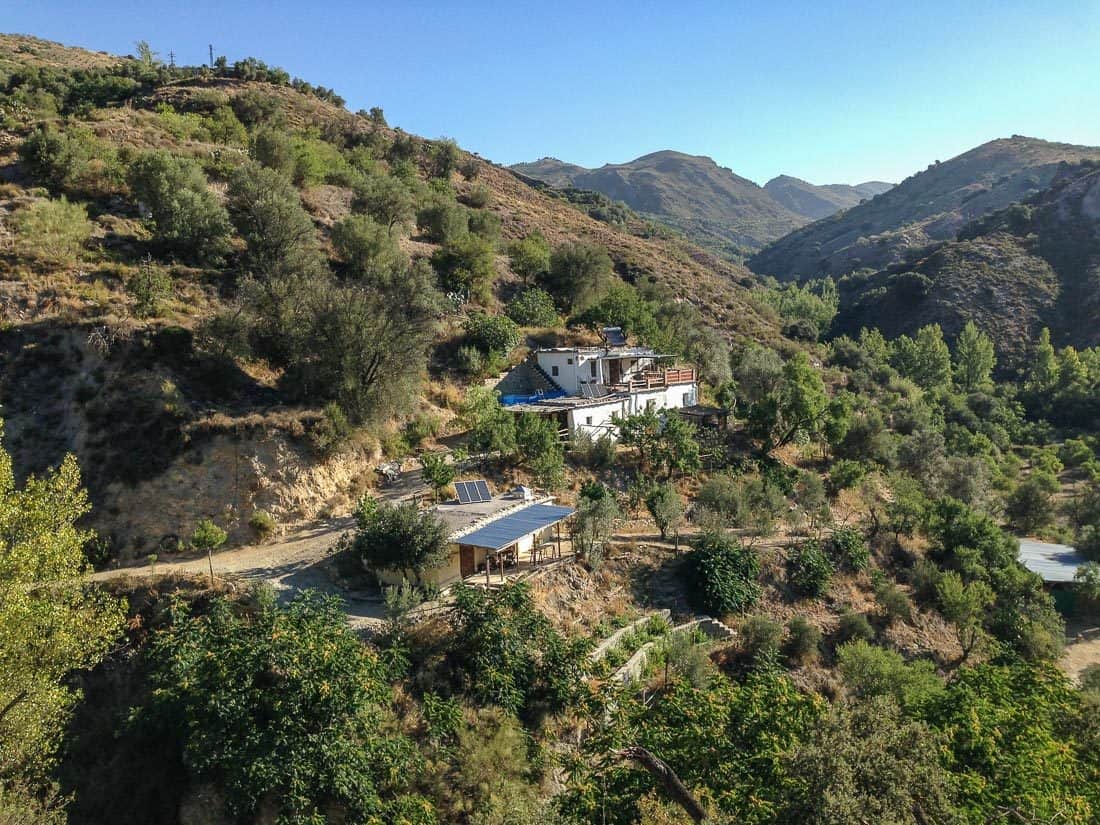
Flight Search
When I’m looking for a flight I always check multiple flight comparison websites as prices vary.
49) Skyscanner – Skyscanner is usually my first stop as it’s easy to use, includes budget airlines, and you can search for “everywhere” as your destination.
50) Kiwi.com (formerly Skypicker) – Kiwi often comes up with routes that other searches don’t by combining different airlines. Our flights from London to Bali were half the price going via Amsterdam. The map view is a handy way to see which cities would be the cheapest to fly to, and you can set any date range to find the cheapest day to fly.
51) Adioso – Another very flexible flight search where you can set a date range and have a region as the destination (for example, to find the cheapest place in Asia to fly to from Bangkok). I like the way they divide results into best, cheapest, and fastest.
52) ITA Matrix – This software powers a number of other flight searches and it’s very flexible. You can’t book with them but you can try going to the airline directly (which we prefer to do anyway as it makes changes easier).
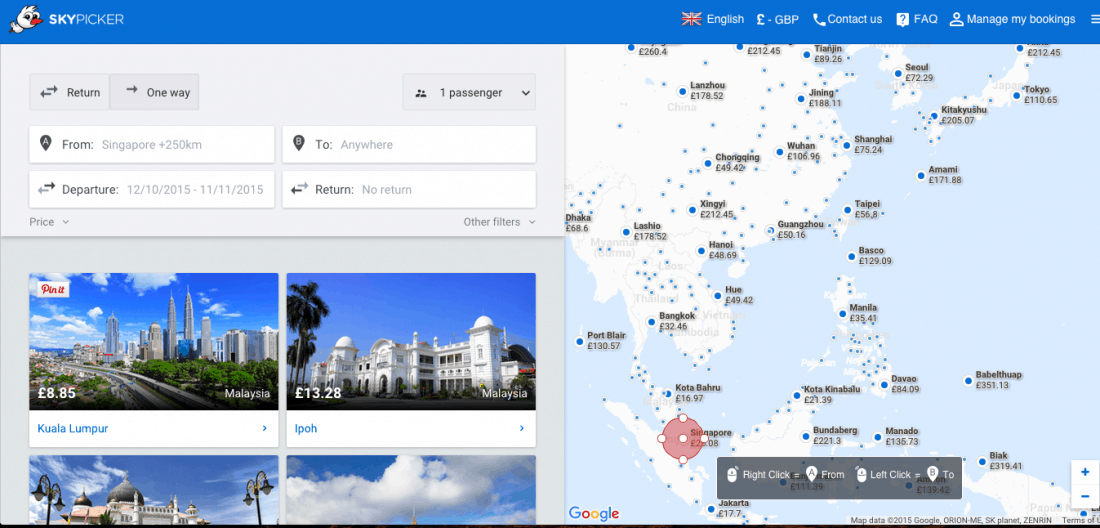
Books
53) $100 Startup – A great introduction to starting a small lifestyle business doing something you love without a big investment. It includes lots of inspiring case studies.
54) The Now Habit – This book helped us become more productive by overcoming procrastination so that we have time for work and exploration. I love the idea of scheduling guilt-free play.
55) Hammocks and Hard Drives: The Tech Guide for Digital Nomads (update: no longer available)- For all your questions about the technical aspects of being a digital nomad including choosing gear, setting up a robust backup system, security, useful apps, and more. The section on improving a WiFi connection is gold.
56) Break Free: The Ultimate Guide to Housesitting – Housesitting has become very competitive so to stand the best chance read this book for everything you need to know including creating the best profile and application letter.
57) Lonely Planet Travel Guides – Although I do a lot of travel research online I still love Lonely Planet guide books (I get the kindle versions) as an easy way to get an overview of a country.
58) The Carry-On Traveller: The Ultimate Guide to Packing Light – My book about how to pack light and travel with just carry-on luggage even if you are travelling indefinitely.
Other
59) Travel Insurance– Finding travel insurance as a digital nomad is complicated as many companies require a return ticket home and won’t allow you to renew while you are abroad. True Traveller and SafetyWing are the best insurance we’ve found for digital nomads. True Traveller is ideal for UK and EU citizens and is what we use as it’s cheaper, and Safetywing is the best option for other nationalities.
60) Relative’s Address – It’s impossible to get by without an address and we are very grateful to Simon’s mum and stepdad who scan and send us our post and deposit the occasional cheque. Before you leave make sure you switch to online bank statements to reduce the amount of post your friend or relative has to deal with.
If you enjoyed this post, pin it!
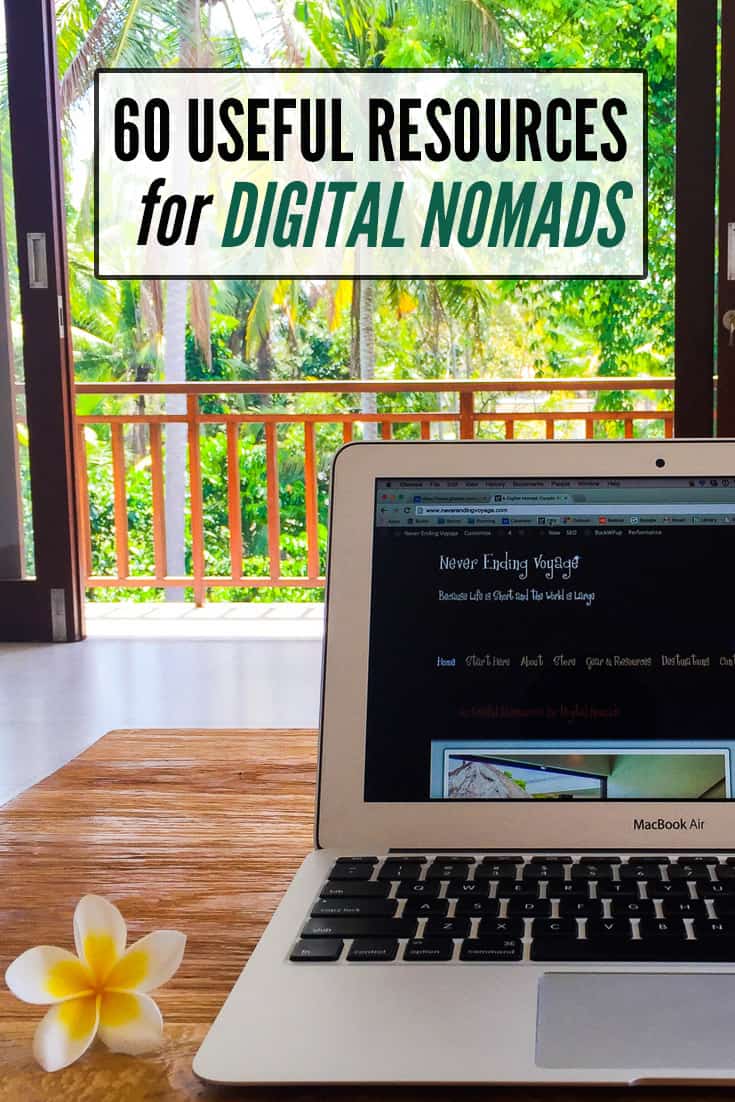
What are your favourite digital nomad resources?
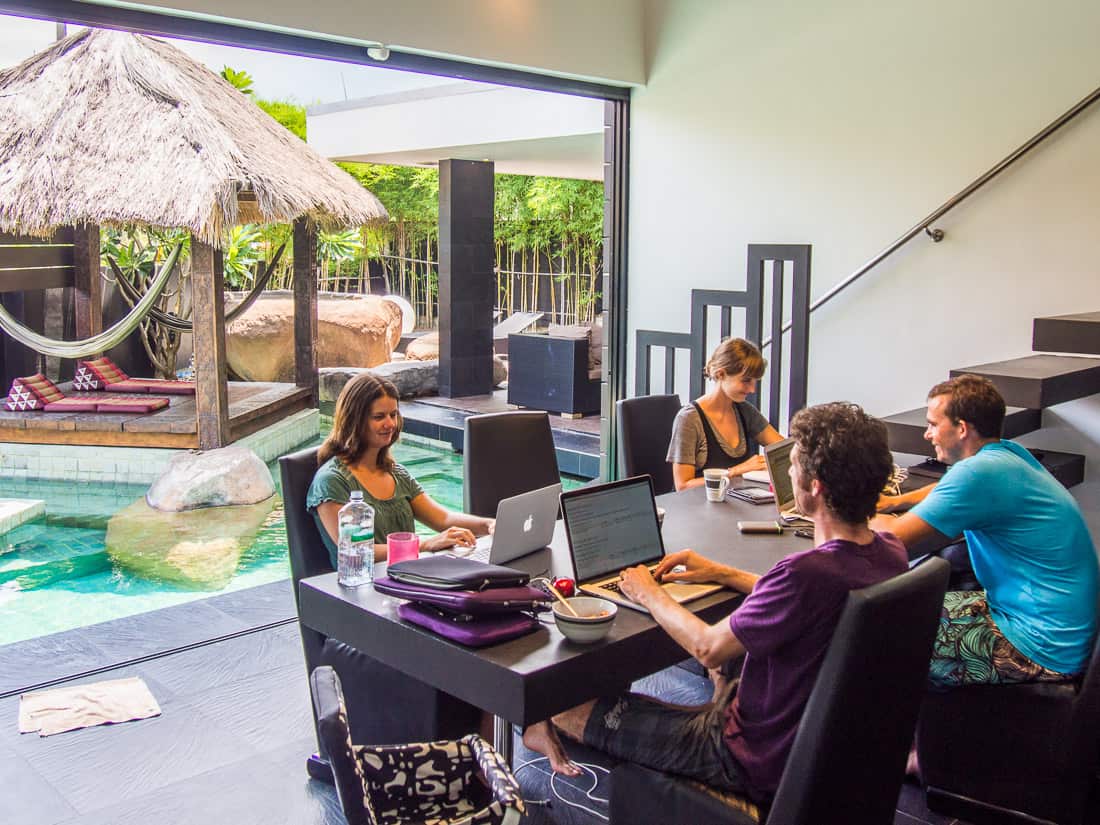
This is fantastic info! Thanks for putting it together!
Glad you found it useful Dave!
Hi erin thanks for this post i compare my list with your list and i need alot of things
Great list! It’s always great to know what other people use to make the daily tasks easier. We love using your trail wallet app and are also huge fans of OneNote to organize all our different notes. Cheers!
Super useful guide, and I love your photo of Atitlan! I mostly use Momondo when searching for flights and then I compare the prices to Skyscanner’s. Momondo usually have the cheapest, though.
Momondo is another site I look at too—the more the better as prices seem to vary widely depending on the destination.
Do you think it was worth to switch to mirrorless camera? DSLR is crucial piece of my travel equipment. How you can travel without it? ;-)
Yes it was definitely worth it. It’s actually a better camera than my DSLR and much lighter (and so are the lenses). Many pro photographers are going mirrorless these days. I’ve written a bit more about it here: http://www.neverendingvoyage.com/carry-on-packing-list-new-additions/
Thanks for the list of resources you shared.
EPIC post! Even though I’m not a digital nomad, there are so many great resources on this list I’m going to check out.
That little Airbnb place looks so lovely. I feel a holiday calling!
I’m glad you found it useful Linda! We’ve found so many gems on Airbnb and encourage everyone we meet to try it as an alternative to hotels.
Thanks. This list will be very useful for all travel lovers and backpackers.
It’s been a while since I’ve seen such a diverse resource list for travellers that isn’t just the same old recommendations, so bravi both of you for putting it together.
Impressive list of resources … I will definitely be able to make use of this in my day to day operations going forward!
Great list. I’m trying to put together something like this for my blog, but it is a daunting task if you want to be as comprehensive as you’ve been here.
I’m curious about 1Password. I’ve often considered signing up for one of these services, but end up postponing it because I have a feeling that it’s ‘putting too many eggs’ in one basket, so to speak. One single breach, and all your passwords would be exposed.
Do you guys ever worry about that?
We aren’t worried about security as 1Password is very secure and we use one ultra secure password that we don’t use anywhere else (Simon uses this method: https://xkcd.com/936/). Ultimately it feels more secure than using the same simple password everywhere which is what we all do as it would be impossible to remember them all otherwise.
Well, I don’t use the same password everywhere and, even if I have some sort of method, remembering all of my passwords is the bane of my life. I’m definitely going to switch to the method you linked to; seems easy and powerful at the same time. Thanks for that!
Great article. This should be turned into a guide for people that love to travel. Technology helps us a lot these days and if we are smart we can take advantage of it. When I travel, I take a laptop and my Iphone. I will be installing some of these programs and apps. Thanks for sharing!
Hi Erin,
Thanks for this comprehensive list. I was happy to go through it and note a bunch of new websites, apps, and software. I loved Nomadlist and had never run into that website. I’m trying to see if I can transition into the digital nomad life, picking up travel writing wherever I can.
I was so thrilled to see the $100 Startup as that’s currently what I’m reading. So many ideas! I think 4 hour work week would be a good addition as well.
It’s a bit of a grind trying to break through to be location independent but I can’t wait til things finally start coming together. You both have been a great inspiration!
Oh and lastly, the other thing I might add to the list is Evernote. I use this quite heavily and was wondering if it was part of your arsenal.
Continue living the dream!
Love from Manila,
Mark
Hi Mark,
Glad you found the list useful!
Simon used to use Evernote but he now prefers using plain text for making notes because it’s future proof and will run on any system.
Good luck with your digital nomad journey!